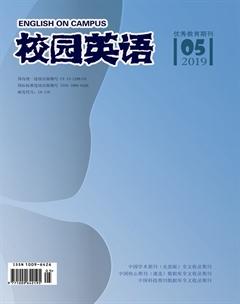A Brief Study of the Oral Interpretation Method of News
【Abstract】The same style has its own linguistic characteristics, showing great differences in language, vocabulary, rhetoric and so on. Therefore, in interpreting articles of different styles, it is necessary to analyze and master their characteristics, which should be reflected in the translation. This paper expounds the features of journalistic English in terms of language style, vocabulary, grammar and culture, and discusses different interpretation methods and strategies in order to solve the difficulties in news interpreting.
【Key words】News English; Stylistic characteristics; Oral interpretation
【作者簡介】童清泉,常州大学。
1. Introduction
The American and English news publications are diverse, covering a wide range of contents, such as current affairs guides, editorials, reviews, features, advertisements and so on, so their styles are not the same. The news style discussed in this paper is mainly news reports, reviews and features. News has its unique stylistic features. Besides following the general principle of oral interpretation, the interpretation of news reports should also follow the basic rules of news interpretation.
2. The Features of News English
2.1 General style of language
Different publications have different language styles, and different types of articles have different stylistic features. However, their writing is influenced by some common factors, thus forming a common journalistic English feature. First, the news publication is a mass media with a wide range of readers, and its language must be adapted to the reading of the vast number of readers, the popularity of which is one of its major characteristics. Second, the Western press attaches great importance to reading fun, some journalists call it “the touchstone of news value.” In order to increase the interest of the report, it requires not only the content of the report, but also the language it uses to adapt to the reading habits. Third, frugality is an important means of language refinement, but also out of the actual need to save space in newspapers and periodicals.
2.2 The characteristics of vocabulary
News English has its obvious lexical features. First, common words have specific news colors. News reports often use some words to express facts and events, so they gradually acquire the special meaning associated with news reports after a long period of use, and become news style words. Second, because the meaning of small words is very wide, so it is more vivid and flexible. News English calls such words universal synonyms. Third, many words are make the use of acronyms. This is mainly to save time and space. Fourth, a lot of temporary word formation. To express the need and the pursuit of novelty, news reports often use “temporary word / raw word”, that is to say, temporary creation or patchwork of words or phrases.
3. Oral interpretation methods in News English
3.1 General principle
News English language is mostly succinct and concise, and its meaning is clear and easy to understand. In order to take account of the understanding and receptivity of the readers with low cultural level, the sentences are not too complicated, and the words are often used in short words and common words, but the expressions are as vivid as possible. Of course, some writers sometimes use stale words in order to be in a hurry or because of their own level, but this is by no means mainstream. Authors should avoid personal feelings and tendencies, but also avoid unrealistic exaggeration. English news reports should take into account their stylistic features and make the translation “as it is” in terms of sentence formation and textual layout. Specific attention should be paid to:
(1) It is necessary to understand the specific meaning of some commonly used words in news English. As mentioned earlier, journalistic English has its own set of idiomatic words.
(2) We must pay attention to adapting the stylistic style of the translation to the original text. Generally speaking, news English has a moderate degree of formality and sometimes some conversational style, so the translated language should not be too refined or vulgar.
3.2 Translation and interpretation
Considering the differences between Chinese and English, in many cases, non-verbatim translation is often used in the interpretation of foreign news reports, which requires the introduction of two other interpretation methods: translation and interpretive interpretation.
4. Conclusion
In the process of news translation, we understand that we should not only follow the general principles of interpretation, but also pay attention to the stylistic characteristics of news. To improve the level of news interpretation, it is necessary to have rich language knowledge, correct understanding of word meaning, clear grammatical concepts and extensive cultural knowledge.
References:
[1]端木義万.美英报刊阅读教程[M].南京:南京学出版社.

